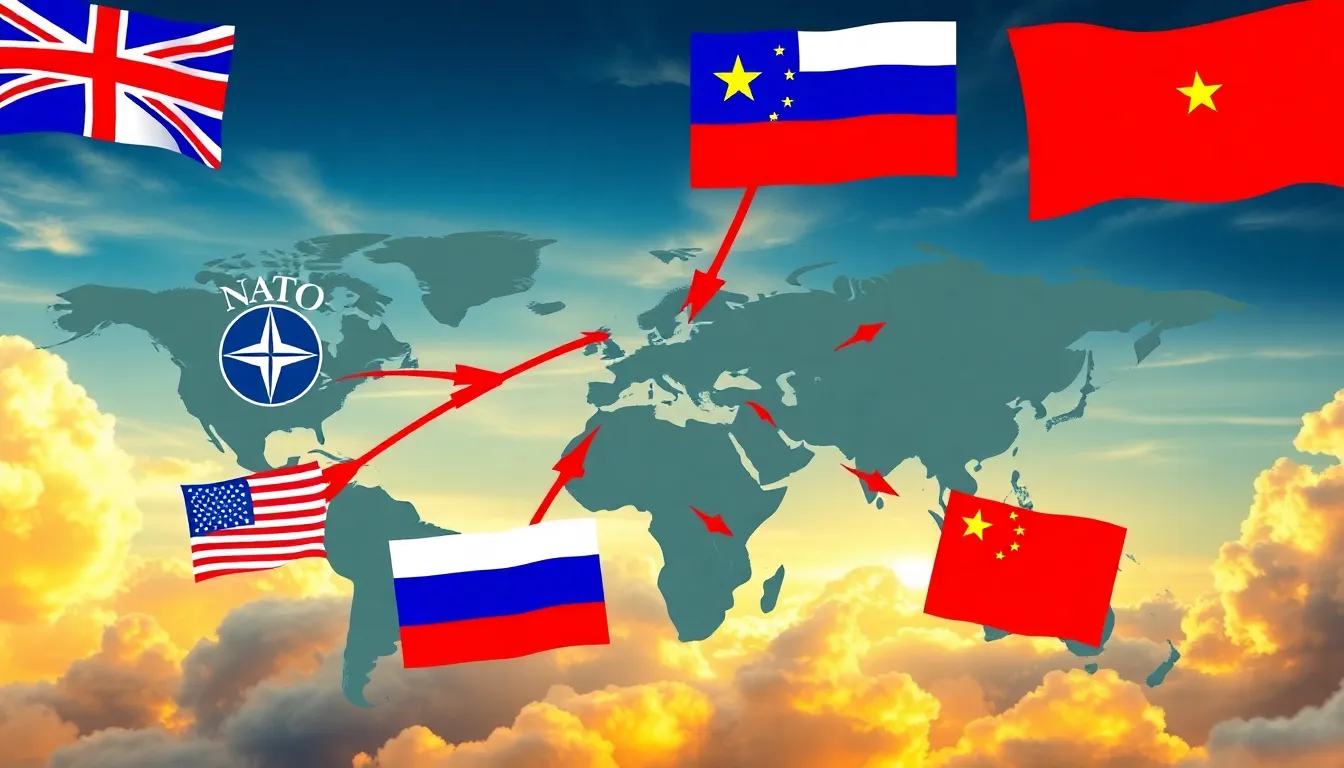In a world where headlines often read like plot twists from a dystopian novel, the buzz around World War III news can feel both alarming and oddly captivating. As tensions rise and nations flex their military muscles, it’s hard not to wonder if we’re just a few viral tweets away from global chaos. But fear not! This isn’t a doomsday prophecy—it’s a chance to stay informed and maybe even chuckle a bit while navigating the serious business of international relations.
From the latest military maneuvers to diplomatic dance-offs, the coverage of potential global conflicts is anything but dull. With each update, the stakes get higher, and the memes get funnier. Join the conversation as we sift through the noise, keeping you updated on the latest developments in a way that’s both insightful and entertaining. After all, who says staying informed can’t come with a side of humor?
Latest Developments in World War III News
Recent developments in global tensions reflect an intensifying focus on military actions and diplomatic negotiations. Staying informed about these updates remains crucial.
Key Events and Announcements
United Nations meetings addressed ongoing military escalations in Eastern Europe. Leaders issued statements underscoring the importance of dialogue to prevent conflict. North Atlantic Treaty Organization (NATO) announced increased troop deployments to deter aggression. Continued ceasefire violations in specific regions amplified calls for urgent resolution. Reports from various news agencies highlighted civilian impacts, emphasizing the need for humanitarian aid.
Major Player Involvement
The United States reinforced its commitment to allies in recent military exercises. Russia’s strategy involved increased naval patrols, demonstrating its military capabilities in key waterways. China engaged in strategic partnerships, focusing on economic ties alongside military precision. Global leaders coordinated responses, signaling a united front against potential threats. Analysts noted the role of emerging powers in shaping the conflict landscape, influencing international dynamics.
Analysis of Global Reactions

Global reactions to the potential for World War III vary significantly, reflecting complex political dynamics and social sentiments worldwide.
Political Responses
NATO has ramped up troop deployments, signaling a collective effort to counter any aggressive moves. The United States affirmed its commitment to defend allies, reassuring partners in Eastern Europe. Russia’s military displays, including increased naval patrols, demonstrate a willingness to assert dominance in contested regions. China has shifted focus towards strengthening strategic partnerships with nations affected by escalating tensions. Responses from global leaders emphasize the need for diplomacy while maintaining readiness for potential military actions. Multilateral discussions via the United Nations reveal a range of positions, often influenced by national interests and historical alliances.
Public Opinion Trends
Public sentiment has shown a rise in concern regarding international conflicts and their implications. Fear of global escalation drives many individuals to seek continuous updates on military advances and government strategies. Social media plays a pivotal role in shaping perceptions, amplifying voices in favor of peace and stability. Polls indicate a notable increase in skepticism about government transparency and accountability in addressing rising tensions. Activist movements have also gained momentum, advocating for peaceful resolutions over military interventions. Surveys illustrate that a majority of citizens favor diplomatic solutions, highlighting the complex interplay between public opinion and political decision-making.
Impact on International Relations
World events surrounding the potential for World War III shift the dynamics of international relations significantly. Increasing tensions among global powers prompt strategic realignments and redefined partnerships.
Shifts in Alliances
NATO’s recent troop deployments demonstrate a renewed commitment among member nations. Countries in Eastern Europe express heightened collaboration with the U.S. for security assurances. Meanwhile, Russia pursues alliances with other nations to strengthen its position, showcasing military capabilities in joint exercises. China strategically engages with both traditional allies and emerging nations to expand its influence. These developments illustrate a fluid landscape where nations reassess their alliances based on perceived threats and opportunities. Each change in partnership can affect global stability and create new geopolitical challenges.
Economic Consequences
The potential for World War III poses significant economic implications for countries involved. Increased military spending strains national budgets, diverting resources from crucial domestic programs. Trade relations face disruption as countries impose sanctions on aggressors, impacting global supply chains and commodity prices. Investors react to uncertainty, with stock markets experiencing volatility amid rising tensions. Economies worldwide feel the ripple effects as energy prices fluctuate due to conflict-related disruptions. Analysts point to an economic downturn if conflict escalates, emphasizing the importance of diplomatic negotiations to stabilize markets. Each economic shift can further influence international relations and humanitarian conditions in affected regions.
Role of Media in World War III News
Media plays a crucial role in shaping the narrative around World War III news. Timely coverage informs audiences about military actions and international diplomacy.
Coverage and Reporting
Coverage focuses on real-time updates regarding troop movements and diplomatic efforts. Notable news outlets provide detailed analysis and context to understand the events. Journalists report on statements from global leaders, revealing insights into shifting alliances. Additionally, data-driven reporting highlights statistics about military deployments, civilian impacts, and humanitarian needs. Accurate reporting from established sources enhances credibility and trust among the public. Audiences depend on various platforms for diverse perspectives, including traditional news and social media.
Influence on Public Perception
Influence shapes public sentiment about the possibility of conflict. Exposure to different narratives affects how individuals perceive threats and diplomatic relations. Emotional reactions often stem from sensationalized headlines, which can create panic or apathy. Surveys indicate that many people rely on news outlets for their understanding of military strategies and government responses. Furthermore, social media amplifies certain viewpoints, leading to polarized opinions on the conflict. Ultimately, the media’s framing of events plays a key role in guiding public discourse and shaping reactions to international tensions.
Conclusion
As global tensions continue to rise the importance of staying informed cannot be overstated. The interplay between military actions diplomacy and public sentiment shapes the narrative around potential conflicts. While the prospect of World War III may evoke fear it also presents an opportunity for dialogue and activism.
The role of media in this landscape is crucial as it influences perceptions and informs the public about ongoing developments. By engaging with credible news sources individuals can better understand the complexities of international relations and contribute to discussions that promote peace and stability.
Staying aware of these dynamics can empower citizens to advocate for solutions that prioritize humanitarian needs and diplomatic resolutions.

